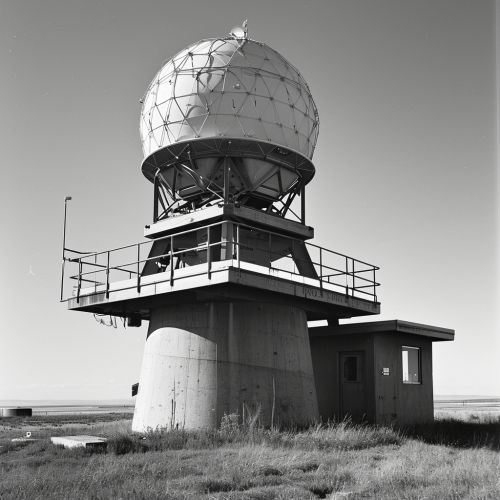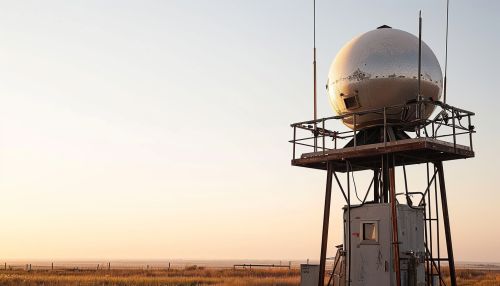Doppler Radar
Introduction
Doppler radar is a specialized type of radar that uses the Doppler effect to produce velocity data about objects at a distance. It does this by bouncing a microwave signal off a desired target and analyzing how the object's motion has altered the frequency of the returned signal. This variation gives direct and highly accurate measurements of the radial component of a target's velocity relative to the radar.
History
The concept of Doppler radar is attributed to Christian Doppler, who first proposed the physical principle in 1842. Doppler radar began to enter common use for weather monitoring during the 1940s with the establishment of the Meteorological Office's radar network in the United Kingdom. However, it was not until the advent of digital signal processing that it became feasible to analyze the radar returns in sufficient detail to produce useful wind and precipitation measurements.
Principles of Operation
Doppler radars function by emitting a wave of certain frequency and then measuring the frequency of the waves that return after being reflected by an object. The change in frequency, or Doppler shift, provides information about the speed and direction of the object causing the reflection. The greater the Doppler shift, the faster the object is moving.


Types of Doppler Radar
There are several types of Doppler radar systems, including continuous wave (CW) systems, pulsed systems, and phased array systems. Each type has its own advantages and disadvantages, and is suited to different applications.
Continuous Wave (CW) Systems
Continuous wave Doppler radar transmits a continuous signal at a constant frequency. This type of radar is simple and inexpensive to implement, but it cannot determine the distance to the target.
Pulsed Systems
Pulsed Doppler radar transmits short bursts of signals at regular intervals. This type of radar can measure both the velocity and the distance of the target, but it requires more complex and expensive equipment.
Phased Array Systems
Phased array Doppler radar uses an array of antennas that can be electronically steered to point in different directions. This type of radar can rapidly scan a large area, making it ideal for weather monitoring and air traffic control.
Applications
Doppler radar has many applications in various fields. Some of the most common uses include weather forecasting, air traffic control, and law enforcement.
Weather Forecasting
In meteorology, Doppler radar is used to measure the velocity of precipitation, and thus the speed and direction of the wind. This information is crucial for weather forecasting, as it can indicate the development of severe weather conditions such as tornadoes and hurricanes.
Air Traffic Control
In air traffic control, Doppler radar is used to track the speed and direction of aircraft. This information is used to maintain safe distances between aircraft and to guide them during takeoff and landing.
Law Enforcement
In law enforcement, Doppler radar is used in speed guns to measure the speed of vehicles. This is useful for enforcing speed limits and detecting speeding vehicles.
Limitations and Challenges
Despite its many advantages, Doppler radar also has some limitations and challenges. One of the main limitations is that it can only measure the velocity component along the line of sight, and cannot measure the perpendicular component. This means that it cannot determine the full velocity vector of a target unless the target is moving directly towards or away from the radar.
Another challenge is that Doppler radar signals can be affected by various factors, including the size and shape of the target, the angle of incidence, and the characteristics of the medium through which the signal travels. These factors can cause errors in the measured velocity and can make it difficult to interpret the radar data.
Future Developments
Future developments in Doppler radar technology are likely to focus on improving the accuracy and resolution of the measurements, as well as expanding the range of applications. For example, advances in digital signal processing and antenna design could allow for more detailed analysis of the radar returns, leading to more accurate and detailed weather forecasts.
